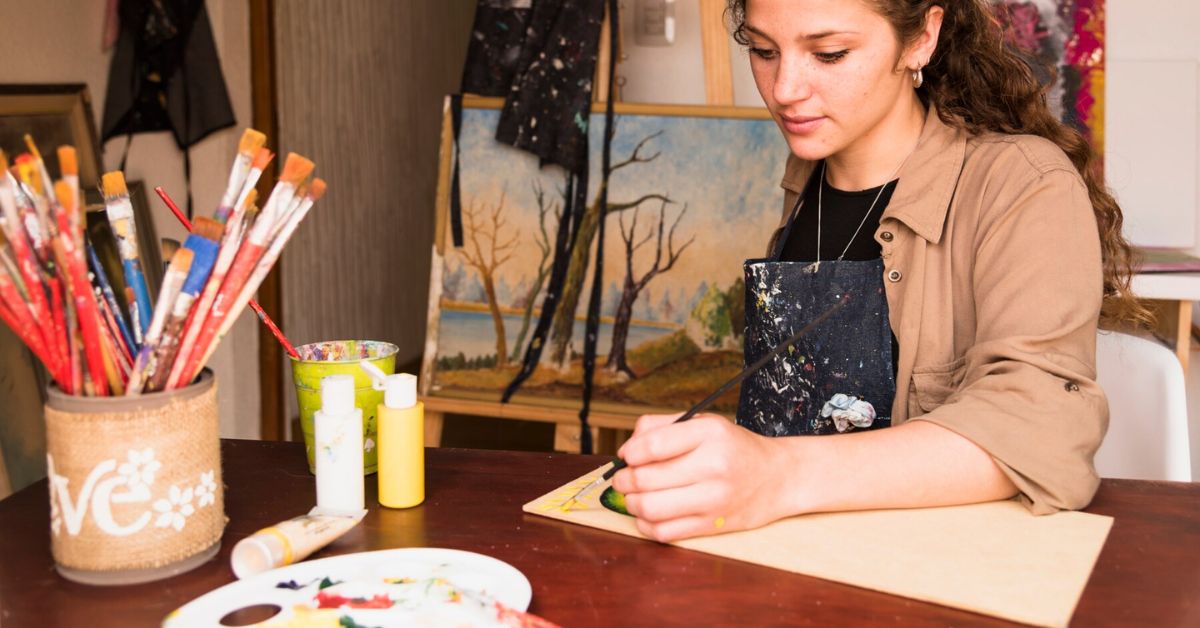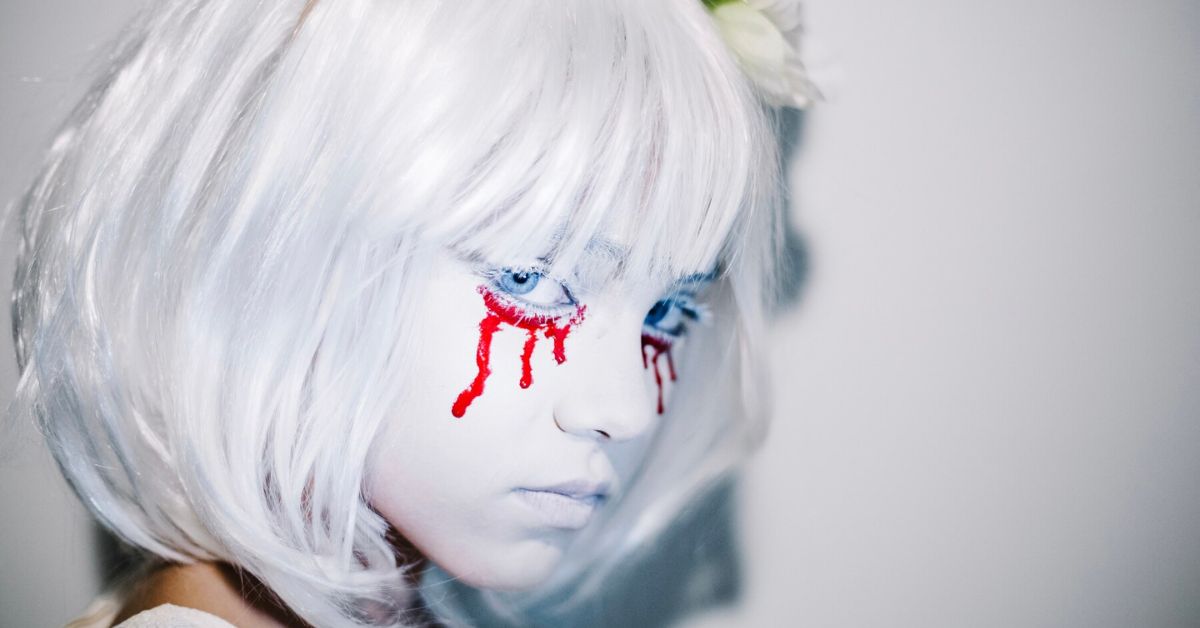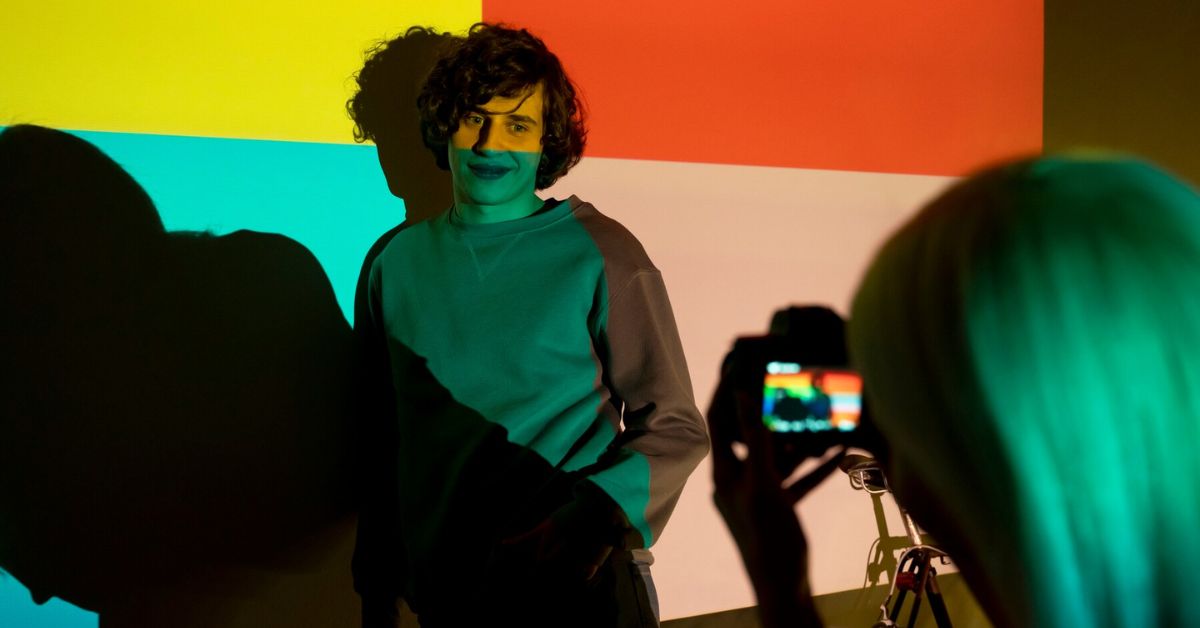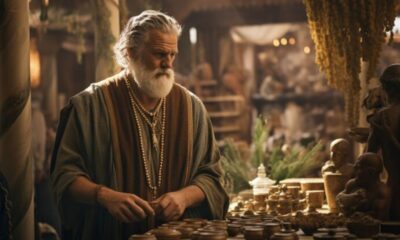Art and Beauty
Unlocking the World of FFbooru: A Comprehensive Guide

If you’re an art enthusiast or someone who thrives on discovering new creative content, you’ve probably heard of FFbooru. But what exactly is it, and why has it become such a hot topic among digital creators and art lovers alike? Let’s dive in and explore everything there is to know about FFbooru.
Understanding the Basics of FFbooru
FFbooru originated as a platform designed for users to share, discover, and organize visual content. Its name reflects its inspiration from traditional booru platforms, which focus on categorizing images using extensive tagging systems.
At its heart, FFbooru is a community-driven website that allows users to upload and tag images, making them easy to find. It serves as both a repository and a discovery tool for creative works across various genres and themes.
How FFbooru Works
User-Friendly Interface Overview
FFboorus boasts an intuitive interface that simplifies navigation. Users can easily browse, search, and upload content with minimal effort.
Image Tagging System
One of FFbooru’s standout features is its robust tagging system. Tags allow users to label images with descriptive keywords, making content more searchable and organized.
Search Functionality
FFbooru’s search engine is where the magic happens. With advanced filters and tag-based searches, finding specific content is seamless.
Exploring Key Features of FFbooru
Whether you’re looking for a specific style, character, or theme, FFbooru’s filters allow for pinpoint accuracy.
FFboorus thrives on user participation. Contributors upload and tag images, ensuring the platform remains fresh and diverse.
The tagging system is a backbone feature, enabling detailed categorization of every piece of content on the platform.
Personalizing Your FFbooru Experience
While you can browse without registering, creating an account unlocks more features like saving preferences and contributing content.
FFbooru allows users to tailor their experience by filtering specific tags or setting up personalized collections.
Benefits of Using FFbooru
Easy Access to Specific Content
FFbooru’s comprehensive tagging ensures you can find exactly what you’re looking for without endless scrolling.
Encourages Creativity and Sharing
By providing a platform for creators to showcase their work, FFbooru fosters a thriving creative community.
Builds a Sense of Community
With active user participation, FFbooru is more than just a platform; it’s a hub where enthusiasts connect.
Comparison with Other Platforms
FFboorus vs. Similar Platforms
Unlike many art-sharing websites, FFbooru emphasizes user-driven tagging and categorization, giving it an edge in searchability.
Unique Advantages of FFbooru
Its simplicity, efficiency, and focus on community make it stand out from competitors.
Best Practices for Using FFbooru
How to Effectively Tag and Upload
Tags are essential. Use relevant and descriptive tags to make your uploads discoverable.
Searching Like a Pro
Combine tags strategically to refine your searches and uncover hidden gems.
Staying Respectful Within the Community
FFbooru relies on user respect and collaboration to maintain its welcoming environment.
The Role of FFbooru in Digital Art Communities
A Hub for Enthusiasts
FFboorus serves as a meeting point for artists, fans, and collectors.
Promoting Artists and Their Work
Many creators gain exposure and support by showcasing their art on FFbooru.
Challenges and Controversies
Misuse of the Platform
Like any online community, FFboorus faces challenges, such as inappropriate content or misuse of tags.
Handling Inappropriate Content
The platform relies on moderation and community reporting to maintain quality.
FFbooru’s Impact on Art Sharing
By organizing content effectively, FFbooru makes art more accessible to a broader audience.
FFbooru facilitates connections between artists and fans, sparking collaborations and creative projects.
Tips for Beginners on FFbooru
Navigating for the First Time
Start with the basics: explore popular tags and familiarize yourself with the interface.
Common Mistakes to Avoid
Avoid spamming tags or uploading content without proper permissions.
The Future of FFbooru
With its growing popularity, FFboorus is likely to introduce new tools and features to enhance user experience.
FFboorus has the potential to shape the future of digital art sharing by promoting inclusivity and collaboration.
Conclusion
FFboorus is more than just a platform; it’s a vibrant community where creativity thrives. Whether you’re an artist looking to showcase your work or a fan eager to explore, FFboorus has something for everyone. Dive in, and discover a world of endless inspiration.
FAQs
What makes FFboorus different from other art-sharing platforms?
Its robust tagging system and community-driven approach set it apart.
How do I start using FFboorus?
Simply visit the platform, create an account, and start exploring.
Can I upload my own content to FFboorus?
Yes, registered users can contribute by uploading and tagging images.
Is FFboorus free to use?
Absolutely! However, some features might require an account.
How does FFbooruu ensure content quality?
Through user moderation and reporting systems.
Art and Beauty
Jank Botejo: Unveiling the Mystery Behind the Name

Have you ever stumbled across the name “Jank Botejo” and wondered, “Who or what is that?” If so, you’re not alone. This intriguing name has been floating around in conversations, sparking curiosity and imagination. But what makes Jank Botejo stand out from the sea of names we encounter daily? Let’s dive in and uncover the story behind it.
The Origins of the Name
The name “Jank Botejo” has an enigmatic quality that instantly grabs attention. Its roots remain a mystery, but it carries a rhythmic charm that makes it unforgettable. Some speculate that it stems from a blend of cultural influences, while others believe it could be a fictional creation with no specific origin.
Jank Botejo in Modern Culture
In today’s digital age, names can gain traction overnight, and Jank Botejo is no exception. From being a topic of memes to subtle references in music and art, the name has carved its niche. Social media, with its unparalleled reach, has played a significant role in spreading the allure of Jank Botejo.
YOU MAY LIKE: Introduction to ATFbooru RookieAnimator: A Comprehensive Guide
A Fictional or Real Persona?
Here’s the million-dollar question: Is Jank Botejo a real person, or is it just a clever invention? The ambiguity adds to its charm. Some claim to have encountered individuals with this name, while others argue it’s purely a creation of the internet hive mind.
The Appeal of Jank Botejo
Why does this name resonate so deeply? Perhaps it’s the mystery, the lack of clear definition, that keeps people hooked. Much like an unsolved puzzle, Jank Botejo invites endless speculation and engagement.
Jank Botejo in Literature and Art
Interestingly, Jank Botejo has started appearing in various forms of creative expression. Writers and artists are incorporating the name into their works, using it as a symbol of the unknown or as a character that represents unpredictability.
How Jank Botejo Inspires Communities
Jank Botejo isn’t just a name—it’s a phenomenon. Online communities have rallied around it, creating fan art, sharing stories, and speculating about its origins. This collective creativity is a testament to how a simple name can inspire so much.
Jank Botejo as a Brand
With its growing popularity, the name “Jank Botejoo” has potential as a brand. Imagine T-shirts, mugs, or even a book series carrying this captivating name. The possibilities are endless for marketers willing to capitalize on its enigmatic appeal.
Comparisons with Other Unique Names
Jank Botejoo isn’t the first name to stir curiosity. Names like “John Doe” or “Jane Roe” have had their moments. However, Jank Botejo stands apart with its unique sound and the mystery that surrounds it.
The Role of the Internet in Jank Botejo’s Fame
The internet is a breeding ground for viral sensations, and Jank Botejo is no exception. From hashtags to viral videos, online platforms have amplified its reach, turning a simple name into a cultural phenomenon.
What does Jank Botejoo symbolize? To some, it’s a representation of the unknown, a reminder of how much there is to discover. To others, it’s a blank slate, a name that can mean whatever you want it to.
Fan Contributions and Fan Theories
Fans have taken the mystery of Jank Botejoo to new heights, crafting elaborate theories and sharing their interpretations. This collaborative storytelling is a testament to the name’s ability to spark imagination.
Is Jank Botejo Here to Stay?
Trends come and go, but some names leave a lasting mark. Whether Jank Botejo will fade away or become a permanent part of our cultural lexicon remains to be seen.
Jank Botejoo teaches us the power of mystery in storytelling and branding. It shows how something as simple as a name can capture the imagination and bring people together.
Conclusion
Jank Botejo is more than just a name—it’s a cultural puzzle that continues to fascinate and inspire. Whether it’s a person, a fictional character, or simply a viral sensation, Jank Botejo reminds us of the magic of the unknown.
FAQs
1. Is Jank Botejoo a real person?
There’s no concrete evidence to confirm whether Jank Botejo is real or fictional, adding to its mystery.
2. What does the name Jank Botejoo mean?
The meaning is open to interpretation, which is part of its appeal.
3. How did Jank Botejoo become popular?
Social media and community-driven content have played a significant role in spreading the name.
4. Can I use Jank Botejoo as a brand name?
Absolutely! Its uniqueness makes it a great choice for creative branding.
5. Will the mystery of Jank Botejoo ever be solved?
That’s anyone’s guess, but perhaps the mystery is what makes it so fascinating.
READ MORE: CLICK HERE
Art and Beauty
Blogspot psychedelic introspective flashback various artists cam: A Brief Overview

The psychedelic movement emerged in the late 1950s and early 1960s, deeply intertwined with counterculture, music, and the exploration of consciousness. Initially inspired by the effects of psychedelics like LSD, the movement expanded to influence all forms of art. Artists, musicians, and writers sought to express the complex, altered states of perception and intense introspection that these substances often induced.
Visually, this movement was characterized by vibrant colors, surreal patterns, and distorted forms—an attempt to depict how the mind could be altered and how reality could be warped. The psychedelic experience emphasized the breaking down of boundaries, encouraging new ways of seeing the world, both physically and psychologically. This art became popular in music album covers, posters, and even literature, capturing the essence of trippy, thought-provoking experiences.
Psychedelic Introspection: Understanding the Concept
Psychedelic introspection refers to the deep, often overwhelming personal reflection that occurs during or after a psychedelic experience. When individuals take psychedelics, they may experience altered states of consciousness, often marked by introspection into their thoughts, emotions, and personal histories. It’s a journey that can bring about profound self-awareness or existential revelations.
On platforms like Blogspot, many bloggers share their own psychedelic introspective experiences through a mix of text, visual art, and poetry. These posts often dive deep into the subjective aspects of the journey, offering readers a glimpse into the complexities of the human mind. What sets these blogs apart is their raw honesty and openness, making the psychedelic introspective theme resonate with people seeking to understand themselves or their own experiences.
Flashbacks: A Common Theme in Psychedelic Art
Flashbacks are a central motif in psychedelic art. These represent moments where the individual relives certain aspects of a previous experience, often intensified by psychedelic substances. In the realm of psychedelic art on Blogspot, flashbacks often manifest visually—patterns or colors that recur or memories that resurface in the form of artwork, text, or video. They evoke the cyclical nature of the human psyche, reflecting how memories, feelings, and experiences come and go.
Artists on Blogspot often depict flashbacks using bright, swirling colors, fragmented imagery, or abstract representations of the mind’s journey. These artistic interpretations attempt to convey the sensation of being trapped in a past memory while simultaneously moving forward.
The Role of Various Artists in Shaping Psychedelic Art on Blogspot
Blogspot hosts an eclectic mix of artists, each bringing their unique style to the table. Some artists work primarily in visual media—creating mind-bending drawings or digital art that represent the psychedelic experience. Others express their feelings through poetry, capturing the introspective nature of the journey in words. Still others blend genres, incorporating music, video, and even animation to illustrate the flashbacks and altered states associated with psychedelics.
Each of these different artists shapes the online conversation about psychedelic experiences, creating a diverse and inclusive community on Blogspot where others can learn, share, and reflect.
Exploring Art in the Psychedelic Context
In the psychedelic context, art becomes a tool for expressing the ineffable. Here’s how different types of art are used on Blogspot:
Visual Art:
Artists often use bright, saturated colors and geometric patterns to capture the visual nature of a psychedelic experience. Whether through paintings, digital illustrations, or even collages, the goal is to portray how the mind’s eye might see the world in an altered state.
Literary Works:
Blogspot hosts a wide variety of writing, from short stories to poetry. Writers use words to describe the emotional journey of psychedelic introspection, often drawing upon stream-of-consciousness techniques to reflect the chaotic and fragmented thoughts that can arise during such experiences.
Music and Sound:
For some artists, the psychedelic journey isn’t complete without sound. Many Blogspot users share their psychedelic soundscapes, merging ambient noises, distorted guitar riffs, and electronic music to give voice to the internal transformations they experience.
Blogspot as a Medium for Creative Expression
Blogspot offers an easy-to-use platform for individuals who want to share their creative works. The simplicity of the platform allows artists to focus more on their content, without worrying about the technical aspects of running a website. This accessibility has made it the perfect space for psychedelic introspective artists to share their journeys with the world.
Cultural Impact of Psychedelic Art on Blogspot
Blogspot has helped foster a cultural renaissance of sorts for psychedelic art. With a community-driven atmosphere, it’s become a space where like-minded individuals can connect, share their personal stories, and explore the themes of psychedelics and introspection together.
Challenges in Depicting Psychedelic Experiences
Capturing the elusive nature of a psychedelic experience in any form of art is incredibly challenging. Artists must navigate the abstract nature of these experiences, often relying on symbolism and metaphor to convey what words or images alone cannot. The result is a deeply personal and creative journey that resonates with anyone who’s had their own encounters with altered states.
Conclusion
Blogspot remains a vibrant space for exploring psychedelic introspection and the flashbacks that come with it. Through the works of various artists, the platform continues to capture the diverse and powerful nature of these experiences. Whether you’re exploring your own thoughts or connecting with others on similar journeys. The world of psychedelic art on Blogspot offers a window into the mind’s eye.
FAQs
What is psychedelic introspection?
It refers to deep, personal reflection that happens during or after a psychedelic experience.
How do flashbacks appear in psychedelic art?
Flashbacks in psychedelic art often manifest through vivid colors, abstract patterns, and surreal imagery that represent memories or past experiences.
Can I create my own psychedelic art on Blogspot?
Yes, Blogspot is an excellent platform for showcasing any form of creative expression, including psychedelic art.
What kind of artists contribute to psychedelic art on Blogspot?
Artists from all backgrounds contribute, including visual artists, writers, musicians, and digital creators.
Why is Blogspot a good platform for psychedelic introspective art?
Blogspot’s simplicity and community-driven approach make it ideal for artists who want to share their work with a like-minded audience.
Art and Beauty
Ancient Art: A Journey Through Time and Creativity

Art has been an intrinsic part of human culture for thousands of years. From the first cave paintings to the grand temples and sculptures of ancient civilizations, art has told the story of humanity’s evolution. Ancient artz is not only a window into the past but also a powerful expression of human emotion, beliefs, and creativity. So, what exactly is ancient art, and why is it so significant today?
What is Ancient Art?
Ancient art refers to the artworks created by early human civilizations, spanning from prehistoric times through to the fall of ancient empires. These works include everything from cave paintings to grand architectural structures, such as the pyramids of Egypt. Through these creations, we get a glimpse into the culture, religion, and daily life of ancient peoples.
Why is Ancient Art Important?
Ancient art is crucial for understanding the development of human society. It reveals how people in different parts of the world thought, lived, and communicated. Additionally, ancient art holds immense historical value, as it serves as a record of the beliefs, technological advancements, and achievements of past civilizations.
YOU MAY LIKE: A Comprehensive Guide to Understanding Book32
The Origins of Ancient Art
Early Beginnings in Prehistoric Times
The story of ancient art begins long before written history, in the prehistoric period. Early humans used natural materials, like charcoal and ochre, to create simple yet powerful works of art. Some of the oldest known artworks are cave paintings, which can be found in places like Lascaux, France. These paintings, thought to be around 17,000 years old, depict animals such as bison and horses, offering insight into the relationship between early humans and their environment.
The First Forms of Art: Cave Paintings and Petroglyphs
Cave paintings were not just artistic endeavors; they were likely part of rituals or storytelling. Alongside paintings, petroglyphs, or rock engravings, also tell the stories of early humans. These markings are thought to have had spiritual significance, representing a connection to the natural world or the supernatural.
Key Civilizations and Their Contributions to Art
Ancient Egyptian Art
The art of ancient Egypt is perhaps the most iconic and recognizable of all ancient cultures. Known for its grand scale, meticulous detail, and deep symbolism, Egyptian art was used primarily for religious and funerary purposes. Monumental structures like the pyramids, statues of gods and pharaohs, and detailed tomb paintings offer a glimpse into the ancient Egyptian worldview.
Mesopotamian Art
Mesopotamia, often referred to as the “cradle of civilization,” gave rise to some of the earliest known forms of writing and art. From the ziggurats of Sumer to the intricate carvings of Assyrian kings, Mesopotamian art reflects the religious devotion, social structure, and military power of the time.
Greek and Roman Art
Greek and Roman art is widely admired for its beauty, proportion, and humanism. The Greeks revolutionized sculpture, creating life-like representations of the human body, while the Romans excelled at architecture and portraiture. The Parthenon and the Roman Colosseum stand as testaments to these ancient civilizations’ artistic prowess.
The Rise of Indian and Chinese Art
In India, ancient art was deeply intertwined with religious and philosophical beliefs, particularly in Hinduism and Buddhism. Sculptures of gods and intricate temple carvings tell the story of India’s spiritual heritage. In China, early art forms like bronze casting and silk painting reflect a rich cultural history that continues to influence art today.
Notable Art Forms in Ancient Cultures
Sculpture
Sculpture is one of the most enduring forms of ancient art. Whether it’s the towering statues of Egyptian pharaohs, Greek gods, or Roman emperors, sculpture served both decorative and symbolic purposes. These works often depicted gods, rulers, or heroic figures, immortalizing them for posterity.
Pottery and Ceramics
Pottery was another significant art form in ancient cultures. It was not only functional but also decorative, with intricate designs and symbolic patterns. The ancient Greeks, for example, are known for their black-figure and red-figure pottery, which depicted scenes from mythology and daily life.
Mosaics and Frescoes
Mosaics and frescoes were common in ancient civilizations, particularly in the Mediterranean region. These artworks were often used to decorate walls, floors, and public spaces, showcasing scenes of gods, everyday life, or historical events. The city of Pompeii, for example, is home to some of the most famous Roman frescoes and mosaics.
Symbolism in Ancient Art
The Role of Mythology
In ancient art, mythology played a crucial role. Gods, heroes, and mythical creatures were often depicted in art, serving both religious and educational purposes. These representations were not only artistic but also conveyed important cultural stories and moral lessons.
Religious and Cultural Significance
In many ancient societies, art was intimately connected with religion. Temples, shrines, and religious monuments were often adorned with artworks meant to honor the gods or facilitate spiritual practices. For instance, the ancient Egyptians believed that their art would ensure a safe passage to the afterlife.
Ancient Art Techniques
Materials and Tools Used by Ancient Artists
Ancient artists were resourceful, using the materials available to them in their environment. Common materials included stone, clay, bronze, and gold. The tools used by artists ranged from rudimentary stone chisels to advanced metalworking techniques, depending on the civilization.
Preservation of Ancient Art
Over the centuries, many ancient artworks have been lost to time, but some have been preserved through the efforts of archaeologists and historians. Techniques such as casting, painting on durable surfaces, and building with stone have allowed many works of ancient art to survive until today.
Famous Ancient Artists and Artworks
The Legacy of Phidias in Greek Art
Phidias was one of the most renowned Greek sculptors, known for creating the massive statue of Zeus at Olympia. His influence on Greek art can still be felt today, as his works embody the ideals of Greek beauty, proportion, and balance.
The Pyramids and Art of Ancient Egypt
The Great Pyramids of Giza are perhaps the most famous works of ancient art. Built as tombs for the pharaohs, these colossal structures are a testament to the skill and ingenuity of ancient Egyptian architects and laborers.
The Terracotta Army of China
The Terracotta Army, discovered in the tomb of China’s first emperor, Qin Shi Huang, consists of thousands of life-sized clay soldiers, horses, and chariots. This massive collection serves as a symbol of the emperor’s power and is one of the most remarkable discoveries in the history of ancient art.
The Evolution of Ancient Art
Transition from Prehistoric to Classical Art
As societies evolved, so did their art. The transition from prehistoric to classical art saw a move from simplistic forms to more realistic and complex representations. Greek art, in particular, marked a turning point in this evolution, focusing on the human form and the ideals of beauty and balance.
The Impact of Philosophical and Religious Movements
Philosophical and religious movements played a significant role in shaping ancient art. The rise of philosophies like Stoicism in Greece and the spread of Buddhism in Asia influenced how artists depicted the human experience, with an emphasis on ideals such as peace, wisdom, and balance.
How Ancient Art Influences Modern Art
The Continuation of Ancient Traditions
Despite the passage of time, the influence of ancient art is still felt in modern times. Many contemporary artists draw inspiration from the classical ideals of beauty and proportion, while others explore ancient symbols and themes to connect with the past.
Artists like Pablo Picasso and Georges Braque were inspired by ancient art forms, such as African and Greek art, which they incorporated into their work. Even today, modern artists continue to experiment with ancient techniques and imagery to create new interpretations of traditional themes.
The Role of Ancient Art in Contemporary Society
Ancient art plays an important role in cultural preservation and education. Museums and galleries worldwide showcase ancient artworks, helping modern generations connect with their heritage and understand the diverse cultures that shaped our world.
Ancient art has also found its way into modern media. From movies like The Ten Commandments to video games like Assassin’s Creed, ancient art continues to influence popular culture, serving as both inspiration and a reminder of our shared human history.
Challenges in Studying Ancient Art
One of the biggest challenges in studying ancient art is the fragility of the materials. Many ancient artworks have deteriorated over time, and much has been lost due to natural disasters, wars, or the passage of time.
The looting and theft of ancient art remain serious issues. Many priceless artifacts have been taken from their countries of origin, often ending up in private collections or museums far from their cultural context.
The Future of Ancient Art
Technology has revolutionized the way we preserve ancient art. Methods like 3D scanning, digital restoration, and virtual museums offer new ways to protect and display ancient works for future generations.
Virtual museums have become an important tool for sharing ancient art with a global audience. These online platforms make it possible for anyone, anywhere, to experience ancient art without the need for travel.
Conclusion
Ancient art offers us a unique lens through which to view history. From the prehistoric cave paintings to the grand structures of the Egyptian pyramids, ancient art tells the story of human civilization in all its forms. Today, these artworks continue to inspire and inform, reminding us of the creativity, skill, and devotion of our ancestors. As we move forward, it is essential to preserve these treasures so that future generations can appreciate the beauty. And cultural significance of ancient art.
FAQs
What is the significance of cave paintings in ancient art?
Cave paintings provide insight into early human life, often depicting animals, rituals, and the environment, which might have held symbolic or spiritual meanings.
How has ancient Egyptian art influenced modern culture?
Egyptian art, especially its focus on symmetry, hierarchy, and the divine, continues to influence modern art, architecture, and design, particularly in the symbolic use of pyramids and obelisks.
What materials were commonly used in ancient art?
Ancient artists commonly used stone, clay, bronze, gold, ivory, and natural pigments for their artwork, depending on the civilization and available resources.
Who were some of the most famous ancient artists?
Famous ancient artists include Phidias, the sculptor of the Parthenon; the anonymous artists behind the Egyptian tomb paintings; and the creators of the Terracotta Army in China.
READ MORE: CLICK HERE
-

 LIFE STYLE3 months ago
LIFE STYLE3 months agoExploring the World: A Journey with myfavouriteplaces.org
-

 EDUCATION10 months ago
EDUCATION10 months agoλιβαισ: Unraveling the Cultural Enigma
-

 BUSINESS10 months ago
BUSINESS10 months agoRetra: Revolutionizing Workflow Management
-

 Health3 months ago
Health3 months agowww healthsciencesforumcom: Your Go-To Source for Reliable Health Information
-

 ENTERTAINMENT3 months ago
ENTERTAINMENT3 months agoHow Ollyhibs TikTok revolutionized sports industry
-

 TECHNOLOGY10 months ago
TECHNOLOGY10 months agoUnlocking the Potential: Exploring the Power of GPT66X
-

 HEALTH & FITNESS10 months ago
HEALTH & FITNESS10 months agoUnderstanding Blisterata: Causes, Symptoms, and Treatment
-

 VAPE9 months ago
VAPE9 months agoHush Absolute Vape: Elevate Your Vaping Experience










